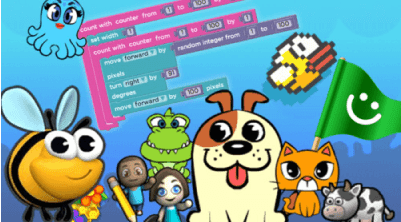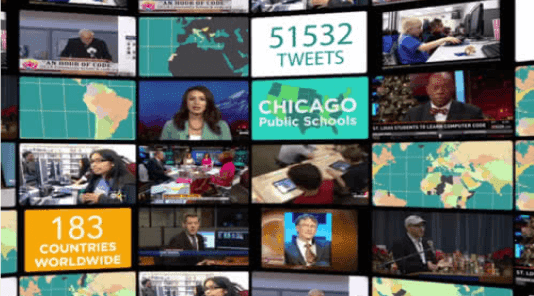Your guide to Hour of Code
Tailored how-to guides for the best Hour of Code experience.
View guide for
Inviting an elected official to your Hour of Code event will show your representative the impact and need for computer science education, and your students will be inspired by a role model in government.
In order to run a successful Hour of Code event while engaging elected officials, complete these tasks prior to the elected official attending your school. The task includes coordination with their point of contact, media invitations, waivers, and planning your agenda.
Determine the point person for both your event and the elected official.
Before Hour of Code
Coordinate both the point person from your event (e.g., school administrator) and for the elected official attending (e.g., staffer or scheduler). Ensure both parties have each other's contact information for the day of the event.

Work with the parties organizing your Hour of Code event to register and put your event on the map. You'll receive early access to information about new activities and special promotions!
You can also view the Hour of Code map to see your event, and know that your dedication is part of a worldwide movement.
Register your eventThis year, the Hour of Code theme is Creativity with Artificial Intelligence (AI). Whether it’s coding new apps and algorithms, generating unique art, or crafting choreography to get us dancing, AI is opening up fresh opportunities for digital expression that expand our understanding of creativity. Make this year special by completing a coding activity AND learning about AI.
First, explore hundreds of coding activities and choose one based on your group's age, experience, interests and more. These select activities feature artificial intelligence as a key topic or lesson.
Then, learn all about AI. Students can watch short videos featuring experts in the field, and there are accompanying lesson plans to extend the activity and guide further discussion. Or, we offer free professional learning for educators to unlock the future of teaching with and about AI.

Create a specific agenda for the day and make sure all parties participating (teachers, students, administrators, elected officials and their staff) are aware of what is happening and when. Things to consider:
Here's a sample agenda to get you started:
Know who will be responsible for coordinating media invitations. It could be the school, the district, the official's office, or any combination.
Secure media waivers for all students, per your state/district/school policy.
Send the public agenda to the official 72 hours prior to the event. Include event dress code, who will greet them, which classroom or event they will attend with teacher's name, and agenda for the event.
Review the agenda and test all technology the day before and day of the event to ensure the event runs smoothly.
To ensure the elected officials feel welcome and engaged, greet the elected official at the door of the event to show them where to go and answer any questions they may have. It is always great to have a student help greet them!
Day of Hour of Code
Take pictures during the event to commemorate the visit and to post on your organization's social media networks. (Publicity or privacy policies may apply).
Make sure the agenda is running smoothly and that it remains on track to end on time. The official may have other visits or meetings scheduled following your event.
After a successful Hour of Code event, make sure to:
Computer science doesn't have to end with the Hour of Code! While 90% of parents want their child to learn computer science, most schools still don't teach it and hundreds of thousands of jobs go unfilled. Learn how to bring computer science to more schools in your area and advocate for computer science to be a graduation requirement.
After Hour of Code
Become an advocateThe Hour of Code started as a one-hour introduction to computer science, designed to demystify "code", to show that anybody can learn the basics, and to broaden participation in the field of computer science. It has since become a worldwide effort to celebrate computer science, starting with 1-hour coding activities but expanding to all sorts of community efforts. Check out the tutorials and activities. This grassroots campaign is supported by over 400 partners and 200,000 educators worldwide.
Every student should have the opportunity to learn computer science. It helps nurture problem-solving skills, logic and creativity. By starting early, students will have a foundation for success in any 21st-century career path. See more stats here.
Start planning here by reviewing our how-to guide. You can organize an Hour of Code event at your school or in your community — like in an extracurricular club, non-profit, or at work.

Find all the resources you need—print and digital—to bring attention to your Hour of Code.

Explore a wide selection of one-hour tutorials designed for all ages in over 45 languages.

Help spread the word about Hour of Code! Discover ways to get your community involved.